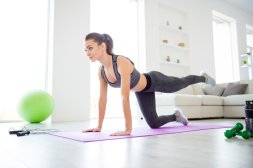Unpacking the Essentials of Fabric Properties for Optimal Performance

When it comes to choosing the right fabric for your clothing, upholstery, or other textile applications, understanding fabric properties is crucial. Among these properties, breathability, drape, and durability stand out as essential factors that influence both comfort and performance. In this article, we will unpack these key fabric properties to help you make informed decisions in your textile choices.
What is Breathability in Fabrics?
Breathability refers to a fabric’s ability to allow air and moisture vapor to pass through it. This property is especially important in activewear and outdoor apparel where temperature regulation plays a vital role in comfort. Natural fibers such as cotton and linen are known for their excellent breathability due to their porous structure. Synthetic fabrics like polyester have varying levels of breathability depending on their weave and finish but can be engineered for better airflow through advanced technologies.
Understanding Drape: The Flow of Fabric
Drape describes how a fabric hangs or falls when it is made into garments or furnishings. A fabric with good drape will flow smoothly over curves without stiffly standing away from the body or surface. Characteristics that affect drape include weight, fiber type, and weave pattern. For instance, lightweight fabrics like chiffon tend to have an elegant drape perfect for evening wear, while heavier materials like canvas provide a structured look ideal for outerwear.
Durability: Longevity of Fabric Performance
Durability is a measure of how well a fabric holds up against wear and tear over time. This property encompasses various aspects including abrasion resistance, tensile strength (how much pulling force the fabric can withstand), and overall lifespan under regular use conditions. Natural fibers such as wool exhibit significant durability while synthetic fibers like nylon are often praised for their strength and resilience against environmental challenges.
The Interplay Between Breathability, Drape & Durability
While each property stands alone in its importance, they also interconnect significantly when selecting fabrics for specific uses. For example, athletic wear requires breathable fabrics that also offer good durability to withstand rigorous activities without losing shape or integrity over time. Similarly, knowing how drape works can help designers choose materials that not only perform well but also achieve the desired silhouette.
Choosing the Right Fabric Based on Properties
When selecting fabrics based on these properties—breathability for comfort during physical activity; drape for aesthetic appeal; durability for longevity—consider what best suits your needs based on the intended use of the item being created or selected. Engaging with knowledgeable suppliers who understand these properties can also guide you toward making wise choices tailored specifically to your project requirements.
In conclusion, understanding the essential properties of fabrics—breathability, drape, and durability—is key to achieving optimal performance in any textile application. Armed with this knowledge you can select materials that not only meet functional requirements but also enhance comfort and style in your garments or home furnishings.
This text was generated using a large language model, and select text has been reviewed and moderated for purposes such as readability.


